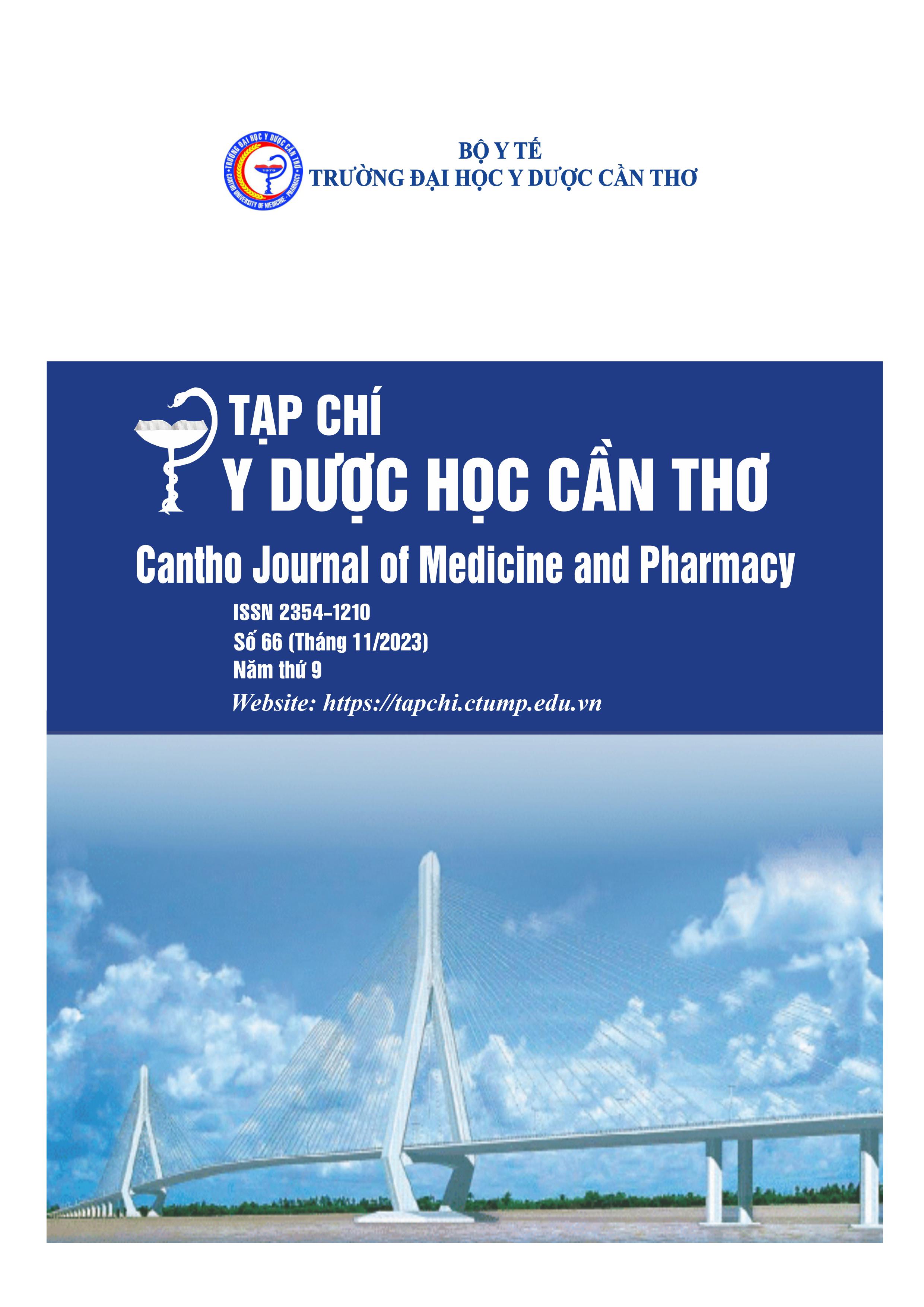STUDY ON CHARACTERISTICS OF DRY EYE PATTERNS AMONG STUDENTS AT BAC LIEU MEDICAL COLLEGE IN 2022-2023
Main Article Content
Abstract
Background: Dry eye is a chronic disease characterized by unstable tear film causing a variety of symptoms and/or visual impairment, potentially accompanied by ocular surface damage. Objective: to provide estimates of the prevalence of dry eye and the characteristics of tear film breakup pattern among students at BacLieu medical college in 2022 and 2023. Materials and method: A descriptive cross - sectional survey was conducted on 728 participants who were students majoring in nursing, pharmacy and midwifery at Bac Lieu Medical College. Dry eye diagnosis was based on the standards of Asia Dry Eye Society (ADES) in 2016 through two criteria: OSDI questionnaire (Ocular Surface Disease Index) > 12 points and test FBUT (Fluorescein Break Up Time) ≤ 5 seconds. Classification of dry eye patterns was on the basis of characteristics of tear film breakup by using the TFOD (Tear Film–Oriented Diagnosis). Results: The rate of dry eye disease was 14.8%. The rate of increased evaporation of dry eye pattern was the highest accounting for 40.7% when comparing with that of decreased wettability dry eye pattern (30.6 %) and aqueous deficient dry eye pattern (28.7 %). Conclusion: Dry eye disease was not rare among medical college students. Increased evaporation of dry eye pattern was more prevalent than decreased wettability or aqueous deficient dry eye pattern in the community of medical students.
Article Details
Keywords
Dry eye, student, TFOD
References
2. Papas E.B. The global prevalence of dry eye disease: A Bayesian view. Ophthalmic and Physiological Optics. 2021. 41(6), 1254-1266, https://doi.org/10.1111/opo.12888.
3. Qian L. and Wei W. Identified risk factors for dry eye syndrome: A systematic review and metaanalysis. Plos one. 2022. 17(8), e0271267, https://doi.org/10.1371/journal.pone.0271267.
4. Vehof Jelle, Snieder H., Jansonius N., Hammond C.J. Prevalence and risk factors of dry eye in 79,866 participants of the population-based Lifelines cohort study in the Netherlands. The Ocular Surface. 2021. 19, 83-93, https://doi.org/10.1016/j.jtos.2020.04.005
5. Hội nhãn khoa Việt Nam. Khuyến nghị trong thực hành lâm sàng chẩn đoán và điều trị bệnh lý khô mắt. Nhà xuất bản Y học. 2022. 45-69.
6. Tangmonkongvoragul C., Chokesuwattanaskul S., Khankaeo C., Punyasevee R., Nakkara L, et al. Prevalence of symptomatic dry eye disease with associated risk factors among medical students at Chiang Mai University due to increased screen time and space during COVID-19 pandemic. PloS one. 2022. 17(3), e0265733. https://doi.org/ 10.1371/journal.pone.0265733
7. Lương Thị Hải Hà, Đức Minh Đặng, Quang Dũng Vũ, Thị Kim Liên Vũ, Thị Thanh Dung Nguyễn và cộng sự. Thực trạng khô mắt trên sinh viên năm thứ năm Đại học Y Dược Thái Nguyên và một số yếu tố liên quan. Tạp chí Y học Việt Nam. 2021. 498(2),78-83, https://doi.org/ 10.51298/vmj. v498i2.177.
8. Supiyaphun C., Jongkhajornpong P., Rattanasiri S., and Lekhanont K. Prevalence and risk factors of dry eye disease among University Students in Bangkok, Thailand. PloS one. 2021. 16(10), e0258217. https://doi.org/ 10.1371/journal.pone.0258217.
9. Hyon J.Y., Yang, H.K. and Han S.B. Dry eye symptoms may have association with psychological speeds in medical students. Eye & contact lens. 2019. 45(5), 310-314. https://doi.org/10.1097/ICL.0000000000000567
10. Aćimović Luna. Evaluation of dry eye symptoms and risk factors among medical students in Serbia. Plos one. 2022. 17(10), pp. e0275624. https://doi.org/ 10.1371/journal.pone.0275624.
11. Zeleke T.C., Adimassu, N.F., Alemayehu A.M., Dawud T.W., et al. Symptomatic dry eye disease and associated factors among postgraduate students in Ethiopia. Plos one. 2022.17(8), e0272808. https://doi.org/10.1371/journal.pone.0272808.
12. Craig J.P., Nichols K.K., Akpek E.K., Caffery B., Dua H.S, et al. TFOS DEW II epidemiology report. The ocular surface. 2017. 15(3), 334-365. https://doi.org/ 10.1016/j.jtos.2017.05.008.
13. Uchino M., Yokoi N., Uchino Y., Dogru M., Kawashima M., et al. Prevalence of dry eye disease and its risk factors in visual display terminal users: The Osaka study. American journal of ophthalmology. 2013. 156(4), 759-766. https://doi.org/ 10.1016/j.ajo.2013.05.040.
14. Wolffsohn J.S., Wang M.T., Vidal-Rohr M., Menduni F., Dhallu S., et al. Demographic and lifestyle risk factors of dry eye disease subtypes: a cross-sectional study. The Ocular Surface. 2021. 21, 58-63. https://doi.org/10.1016/j.jtos.2021.05.001.
15. Donthineni P.R., Kammari P., Shanbhag S.S., Singh V. and Das A.V. Incidence, demographics, types and risk factors of dry eye disease in India: electronic medical records driven big data analytics report I. The ocular surface. 2019. 17(2), 250-256. https://doi.org/10.1016/j.jtos.2019.02.007.


